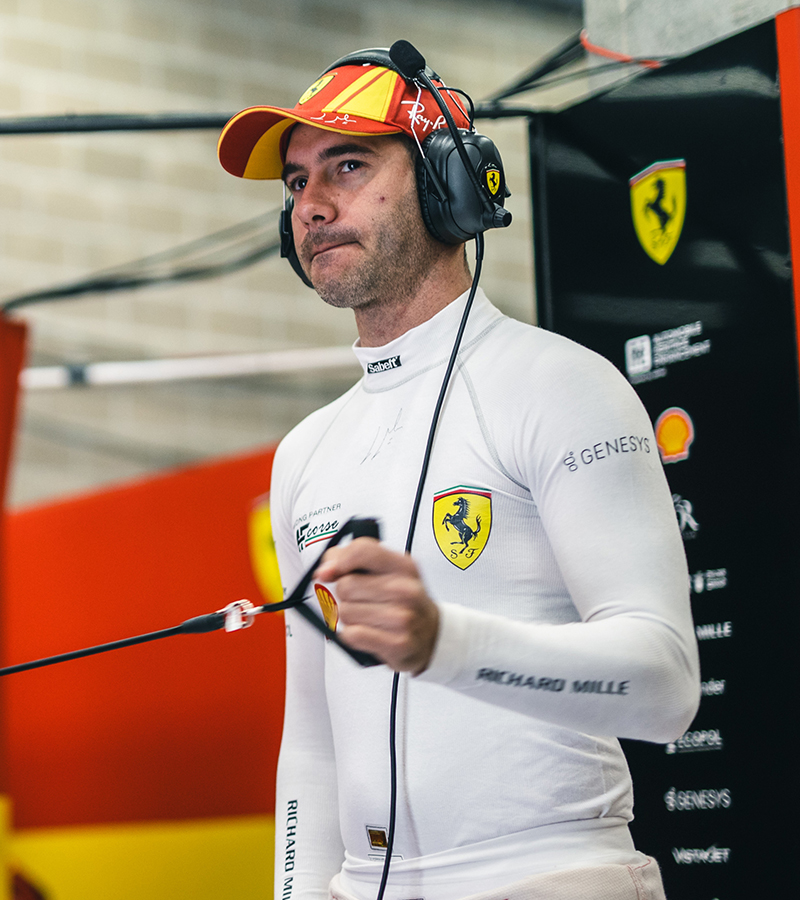Driver training and preparation

Maranello 03 luglio 2024
Climbing into the cockpit of the Ferrari 499P and driving the Hypercar during FIA WEC races is an all-encompassing physical and psychological undertaking. Drivers prepare for their stints with a dedicated individual and collective training programme – in the gym and elsewhere – at Training Camps involving all Maranello-brand drivers.
“To perform at your best in competition, preparation involves three main areas: physical, mental, and nutritional,” said Antonio Giovinazzi, driver of the 499P number 51. “I love cycling because it is a sport I enjoy and in which I can simulate situations similar how I feel when I’m driving,” adds Nicklas Nielsen, the winner with Antonio Fuoco and Miguel Molina of the 24 Hours of Le Mans 2024.
Not just cars. Before the start of a season, each driver plans a training programme that can be adapted to their individual needs and monitored by Ferrari’s medical staff. In this context, gym work is crucial as it maximises the time available and the results they can achieve.
“Physical preparation is essential,” says Giovinazzi. “Besides the work we do individually, I think the two Training Camps we attend with all our teammates are extremely valuable. On the one hand, we can have fun experimenting with different disciplines, from rowing to swimming, from padel to cycling; on the other, away from the racing context, we can have fun, get to know each other better, and enjoy a nice, relaxed atmosphere.”
Cycling is popular among the Maranello brand’s Hypercar official drivers—Fuoco, Molina, Nielsen, Pier Guidi, Calado, Giovinazzi, Ye, and Shwartzman. “I really enjoy cycling,” says the 27-year-old Dane, Nielsen. “As soon as I can, I hop in the saddle for a couple of hours of training, which becomes four to five when I have more time. Distance? I don’t aim to cover a specific number of kilometres but to give it my all.” According to Nielsen, cycling also has an added value: “As drivers, we have to be willing to sit in our car’s cockpit for three or four hours if necessary,” he explains.“Cycling is an ideal training discipline because, unlike running for example, it allows us to monitor our heart rates in a situation more similar to a car.”
Mind and sleep. Physical and mental commitment, stress, and fatigue peak in a race like the 24 Hours of Le Mans. “It’s vital to stay focused and calm throughout the week, even when unexpected events put you under a lot of stress,” explains Giovinazzi. “That’s why I focus on myself with targeted exercises in the weeks before the 24 Hours.” I have no special secrets for preparing for Le Mans,” Nielsen continues, “meaning that I don’t plan any compulsory sleep cycles similar to the Le Mans stints. I don’t do it because many variables can change during the race. As a driver, you have to adapt to these situations and can only do so by finding your personal balance. You have to arrive at the race weekend relaxed so you can always find the energy and sharpness to be ready to climb into the cockpit and give your absolute best.”
Reflexes. The images of drivers ready to put on their helmets and begin their driving stint are familiar to every motorsports fan: precious minutes where every detail is essential to relax both muscles and mind. “I warm up with some physical exercises and muscle stretching,” says Giovinazzi, while Nielsen adds: “The classic reactivity test is another really beneficial exercise: you have to touch the light signals with your hand as soon as the lights come on. The goal is to minimise reaction time, the same as you have on the track when driving your Hypercar.”